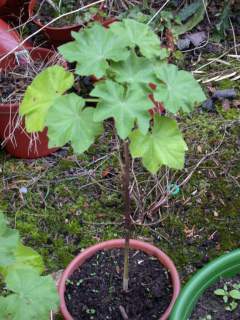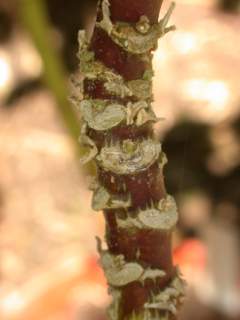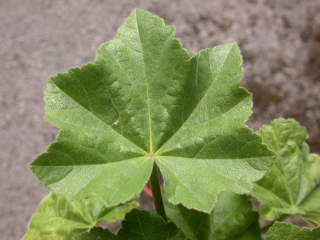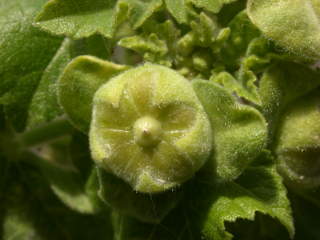 Lavatera arborea L.,
Lavatera arborea L., back to Tree Mallows
back to Digital Herbarium
more images
The Lavatera Pages
 Lavatera arborea L.,
Lavatera arborea L.,
![]() Tree Mallow, Velvet Tree Mallow
Tree Mallow, Velvet Tree Mallow
![]() Baummalve, Baumförmige Strauchpappel, Strauchmalve
Baummalve, Baumförmige Strauchpappel, Strauchmalve
![]() jättemalva
jättemalva
![]() Lavatère, Lavatère arborescente, Mauve royale
Lavatère, Lavatère arborescente, Mauve royale
![]() Mauve, eune mauve
Mauve, eune mauve
![]() Grande Mauve
Grande Mauve
![]() Malvone maggiore, Malva arborea, Malvone, Malva reale
Malvone maggiore, Malva arborea, Malvone, Malva reale
![]() malva arbórea, malva gigante
malva arbórea, malva gigante
![]() malva, malvera, malva-arbre, malva fogassa, vauma, vaumera
malva, malvera, malva-arbre, malva fogassa, vauma, vaumera
![]() Slézovec
Slézovec
![]() Drevesasti grmièasti oslez
Drevesasti grmièasti oslez
![]() drvolika stola
drvolika stola
![]() Hobbejza tas-sigra
Hobbejza tas-sigra
![]() lavatero roka, malvo roka
lavatero roka, malvo roka
![]() Hocyswydden
Hocyswydden
Distribution: L. arborea is found on the coasts of the Mediterranean and Western Europe, and in North Africa. Among Mediterranean islands it is found in, at least, Balearic Islands (Mallorca, Menorca, Ibiza, Cabrera, Formentera), islas Medas (Catalonia), islas Columbretes (Valencia), Corsica, Sardinia, Elba, Sicily, Malta, Linosa, Pianosa, Crete, Kythera, Kalymnos, Alonissos.
In the British Isles it is native to the south coast of England from Hampshire westwards, the west coast of England, Wales and Scotland as far north as Ayrshire, and on the south and east coasts of Ireland, including stations in/at Chichester Harbour, Portland, Weymouth, Devon (Dawlish Warren), Alderney, the Isles of Scilly, Somerset (West Mendip, Porlock), Steep Holm, Blaenau Gwent, Gower, Skokholm, Ynysoedd y Gwylanod (islets off Lleyn), Skerries and Ynys Feurig (islets off Anglesey), Deganwy (pers. obs.), Kimmel Bay (pers. obs.), the Calf of Man and Spanish Head, Blasket Islands, Bray Head, Rockabill Island, Rathlin Island, localities on the Ulster coast, especially Ards peninsula and in Lecale, the Rhinns of Galloway, Ailsa Craig and also at locations in the Firth of Forth on the east coast of Scotland, such as Craigleith, East Lothian including Bass Rock (may be introduced).
In France it is found in Provence (Bouches du Rhone, Port-Cros, Ile de Porquerolles, Presqu'Ile de Giens, Cap Lardier), the Vendee (Isle de Ré), Brittany and the Cotentin.
The only station in the Basque Country is at Izaro.
In Portugual it is found on the Berlenga Islands.
On the Mediterranean coast of Spain it is found in Alicante, Murcia and Catalonia (Cap de Creus).
Mainland stations in Italy include Liguria, Monte Argentario and Campania, and in Croatia Krka National Park Among the Italian islands it is found on Vivara.
It is generally absent from the African and Asiatic coasts of the Mediterranean, but it is recorded from Algeria and Libya. In Turkey it is reported from Lesbos and the Aegean coast, but is probably not native there.
It is naturalised in many locations around the world, including California, Mexico, Australia, New Zealand, South Africa, Argentina, Chile, and Macaronesia. In Western Australia localities include Rottnest Island, Shoalwater Islands, and wasteland between Perth and Albany; in South Australia Kangaroo Island, Althorpe Island and Gulf Saint Vincent; in Victoria Port Campbell National Park. and in Tasmania Lauderdale. In New Zealand it is found in Wellington. In South Africa it is found at Malgas Island, Makana and the Zandvlei Estuary. In Macaronesia it is found on Tenerife and Fuerteventura in the Canary Islands, and in the Cape Verde Is., Madeira and the Azores. In the British Isles it is naturalised (i.e. not native) in Sussex (Dungeness), Kent (St. Margaret's Bay), and Essex, and there are casual records at inland locations in Shropshire and Worcestershire.
Habitat: dry rocky places, usually near the sea, especially small islands and headlands. On some of the smaller Mediterranean islands it is found in the interior of the islands. Lavatera arborea is unable to withstand grazing, so the distribution is confined to locations where livestock is excluded. For example, at Kimmel Bay, it is found in the strip of grassland between the caravan parks and the beach, which is not the normal habitat for the species. In addition is prefers a nitrogen-rich soil, as is found in the vicinity of seabird colonies. It requires a mild climate. I suspect that dispersal on the feet of seabirds also plays a part in its distribution.
Identification:
Lavatera arborea can be recognised by the petals with 5 darker veins and a dark base, and the broad bracteoles. When not in flower the absence of leaves and side shoots on the lower portion of the stem distinguishes this species from other species of Malva and Lavatera.
Technical Description
Erect annual, biennial or perennial arboriform shrub to 50-200-300 cm, single-stemmed, later branched at top, initiation of development of side shoots following that of flowers, stellate-tomentose on young parts other than corolla. In subsequent years new shoots produced from the upper parts, never from the base. Stems initially green, becoming suffused with red, then olive and finally grey, with distinct leaf and stipule scars; foliage alternate, stipulate and long-petiolate; stipules green, subulate, marcescent, caducuous, ciliate, 2-4 mm long; petioles green, tomentose, approximately equal in length to the lamina; laminae simple, cordate, suborbicular, to 15 cm in diameter, often much smaller, 5-7-nerved, shortly 5-7-lobed, often distinctly plicate, upper leaves more distinctly lobed, dentate, ciliate, tomentose on upper and lower surfaces; inflorescence indeterminate, a leafy raceme; flowers hermaphrodite, protandrous, involucellate, borne upright, singly, in pairs, or in fasciculate clusters of 3 to 5 in the axils of upper leaves and of leaves of side shoots; pedicel green, deflexed-tomentose, short, to 1 cm; epicalyx spreading, bracteoles 3, symmetrically disposed, broadly ovate, tomentose, ciliate, about 8 mm long at anthesis, fused for about half their length, green, accrescent and spreading in fruit; calyx reduplicate-valvate in aestivation, sepals 5, shorter than the bracteoles (c. 4 mm), accrescent and connivent in fruit, connate for about half their length, densely pubsescent, ciliate, green; corolla convolute in aestivation, 3 cm across at anthesis, petals 5, spirally arranged, hypogynous, apex sub-emarginate, 15-20 mm long, rose with 5 darker veins, base and claw dark purple; staminal column about 10 mm long, antheriferous in upper half, hispid on lower half, near white extensively streaked with purple; filaments rose-purple, anthers rose(?), reniform, unilocular; pollen white; ovary 8-loculate, locules uniovulate, ovules ascending, placentation axile; style branches filiform, white, as many as the locules, stigmas introrsely decurrent; fruit schizocarpous, verticillate, about 1 cm across; axis about 1.5 mm diameter, conical, somewhat protruding beyond the mericarps, apex acute; mericarps 8, dorsal face tomentose, with irregular broad-V shaped ridges, lateral faces glabrous, irregularly ridged, sometimes fenestrate, angle sharp, somewhat sinuate; the single seed conformed to the cell, which it completely fills; the testa crustaceous, smooth; embryo incurved into an incomplete ring around the scanty soft or mucilaginous albumen, cotyledons broad and foliaceous, somewhat infolded, radicle centripetal-inferior.
Description:
| Lavatera arborea is an erect tree-like perennial, growing to 10 ft in height. The vegetative parts have a covering of stellate hairs. The young stems are green. As they age they developed a reddish tinge, before becoming olive and finally gray. At intermediate ages they bear distinctive leaf and petiole scars. The base of the trunk is bare, side shoots being produced in the upper parts only, leading to the tree-like habit of the plant. |
 |
| The leaves are borne alternately (one per node). They are up to 15 cm across, but often much smaller, especially on flowering shoots. They are shallowly palmately lobed, with acute apices, heart-shaped bases, and toothed, hair-fringed margins. The stalks are green and tomentose, and approximately as long as the blades. |
 |
| The stipules are small (up to 4mm long) and roughly triangular in shape |
|
| The flowers are borne upright, single, in pairs, or most commonly in fasciculate clusters (i.e. lacking a common stalk for the cluster) of 3 to 5 in the leaf axils. They consist of an epicalyx of 3 fused bracteoles, a calyx of 5 sepals, a corolla of 5 petals, an androecium and a gynoecium. |
|
| The flower stalk (pedicel) is short, about 1 cm long, green in colour, and covered with a dense covering of white hairs pointing back towards the stem. The epicalyx is composed of 3 bracteoles which are broadly ovate, and fused for about half their length. They are tomentose and ciliate. |
|
| The sepals are much smaller (c. 4 mm) than the bracteoles, and are almost completely obscured by them in bud and flower. They are triangular in outline, with an acute apex, ciliate margin and densely pubescent surfaces. In fruit they lie flat over the upper surface of the fruit, partially obscuring the fruit. |
|
| The petals are between 15 and 20 mm long. On the upper side they are rose-magenta in colour, with 5 darker veins, and a dark purple base and claw. The marking is much less distinct on the under side. |
|
| The staminal column is a little over 1 cm in length. It is white in colour, with purple streaks. The lower half bears white haris. The upper half is antheriferous, the many (c. 40?) filaments being rose-purple in colour, and the pollen white. |
|
| The style is enclosed by the staminal column and is terminated by 8 style branches. These are white, slightly tinged with rose, and threadlike. The stigmas are introrsely decurrent. |
|
| The fruit is about 1 cm across, surrounded by the spreading bracteoles and partially covered by the sepals. It is composed of 8 seed bearing segments disposed in a ring about a conical, pointed, protruding axis. |
 |
| The mericarps are shaped like a segment of an orange. They are about 3mm across in their longest dimension. There is a sharp angle between the lateral and dorsal faces. The lateral faces are flat, and ridged (the ridges being about 1/3rd of the width of the gaps between them). The dorsal face is weakly ridged and densely covered with short hairs. |
Cultivation: Seed may be sown indoors, lightly covered, in mid-spring, for planting out later. Germination is easy and rapid. Sowing in the flowering position may also work, but I don't have experience of this. In my experience plants do not reliably survive their first winter, and it may be preferable to overwinter young plants indoors/under glass. Bean5 says that 'Variegata' must be propagated by cuttings, but I have found that, at least when grown away from the wild type, this variety comes true from seed.
Pests and Diseases
L. arborea is susceptible to Malva vein clearing potyvirus.
L. arborea is susceptible to Hollyhock Rust, Puccinia malvacearum, but not as badly as Hollyhock, Alcea rosea, Common Mallow, Malva sylvestris, or Musk Mallow, Malva moschata. It is also susceptible to the rust Colletotrichum malvarum
Colletotrichum malvarum,-,stems,oligophagous,-,spots,common,Ellis MB, Ellis JP,Microfungi on Land Plants: an Identification Handbook, Croom Helm,1985
The fruits and seeds of L. arborea are the principal food plant for the caterpillars of the Tortricid moth Crocidosema plebejana. The caterpillars of Painted Lady, Vanessa cardui (Cynthia carduelis), are recorded as feeding on the leaves of L. arborea.
The leaves are consumed by the Cicadellid Eupteryx melissae
Cytology: Lavatera arborea is reported as having 40 or 44 chromosomes. It seems to me that it is likely that it is an ancient hexaploid with 42 chromosomes (counting chromosomes is difficult, and errors are possible).
Variation:
The leaf-blades are often noticeably plicate. The number of lobes on the leaf-blade may be 7 instead of 5. There is a variegated cultivar.
Taxonomy:
Lavatera arborea L., Species Plantarum 690 (1753)
Malva dendromorpha M.F.Ray, Novon, 8(3): 292 (1998)
Lavatera arborea, in common with other species from Lavatera section Anthema, is closely related to Malva section Malva, including Malva sylvestris and the weedy mallows. Martin Forbes Ray4 transfers several of these species, including Lavatera arborea, to Malva. The epithet arborea is preempted by Malva arborea St.-Hil., a synonym of Hibiscus pernambucensis (Talipariti "pernambucense"), and Lavatera arborea was renamed as Malva dendromorpha M. F. Ray. This would seem to be the correct name for the species.
Synonymy
References
Bibliography
Photographs
photographs in the Lavatera Gallery.
photographs at Universite d'Aix-Marseille III
back to Tree Mallows
back to Digital Herbarium
more images
The Lavatera Pages
Acknowledgements
text, photographs and HTML © 2004 Stewart Robert Hinsley